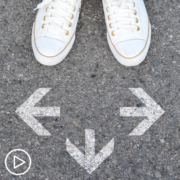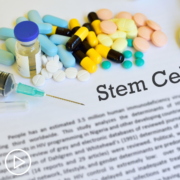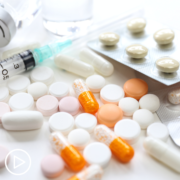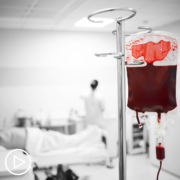How Is Relapsed or Refractory Myeloma Managed? from Patient Empowerment Network on Vimeo.
Drs. Irene Ghobrial and Betsy O’Donnell discuss next steps if myeloma relapse occurs or the disease doesn’t respond to treatment. The experts review the necessary tests following a myeloma relapse and how a treatment choice is determined.
Dr. Irene Ghobrial is Director of the Clinical Investigator Research Program at Dana-Farber Cancer Institute and Professor of Medicine at Harvard Medical School. Learn more about Dr. Ghobrial.
Dr. Betsy O’Donnell is Assistant Professor of Medicine at the Dana-Farber Cancer Institute specializing in Plasma Cell Disorders.
See More From INSIST! Myeloma
Related Programs:
Transcript:
Katherine Banwell:
We know that relapse can happen. Dr. Ghobrial, how common is relapsed or refractory disease?
Dr. Irene Ghobrial:
Yes, and, fortunately, we do have amazing remissions. We have very long remissions. Many people are living 10 years, 15 years and longer, which as Dr. Nadeem said, was not something we knew about years ago. I trained 20 years ago as a fellow, and myeloma was a survival of three to five years.
We’ve come a long way, but we want to change that even better. We want a cure. We want to tell a patient, “You are done. You’re cured,” and we will not stop until that happens. So, when people have a progression again or relapse, then we want to consider what is the next available option. What is the best option to give them yet one more long, long remission? We are failing sometimes, and that’s because the disease is so bad, the biology of the disease is so bad, and the drugs that we’re using may not be the best drugs for that patient.
And that’s why we need to understand better the biology and pick the right drugs for the right patient up front as much as we can, and also think about earlier treatment. We were just saying we probably have amazing drugs, but we’re waiting way too long until people have almost metastatic disease, and then we treat them. Why not think of an earlier interception when the disease is less mutated, when you have less cancer cells, a better immune system, and use your best drugs then? And hopefully we will achieve cure in many of those patients.
Katherine Banwell:
What testing takes place after a relapse? Is it different than what has happened before, the testing that was done before?
Dr. Irene Ghobrial:
No, the same tests exactly. We sort of say it’s restaging. We check everything again – the bone marrow biopsy, the FISH, because you may now develop a 17p that was probably there, but the very, very small number of cells that you cannot detect, and now it grows because of something called chrono selection. The drugs kill the sensitive cells, but they don’t kill the bad cells, and that’s how we can get all of those changes and mutations.
Katherine Banwell:
Okay. Dr. O’Donnell, is the process for choosing treatment different for a relapsed or refractory patient?
Dr. Irene Ghobrial:
So, that’s a great question. Yes, it can be. I mean, again, it always depends on how the person is doing at that time. It also depends, there are certain drugs that may not be approved in the front lines, something like venetoclax (Venclexta). If a person has a specific translocation, this 11;14, that’s something that we would like it in a second-line setting, for example.
Usually one of the big questions people ask is if you’re on a specific class of drugs, should you change classes? So, this example is if you’re on lenalidomide (Revlimid), and you have evidence that your disease is progressing, should you change to a different type of drug? A proteasome inhibitor, monoclonal antibody? Should that include one of the same classes of drug, like pomalidomide (Pomalyst), which is the next generation?
So, there are a lot of different factors that we consider. The number of drugs. So, you know, as Dr. Nadeem said, historically – there’s a lot of history in myeloma therapy, and it’s been an evolution, and so now we’ve had people who were treated with the three-drug combination that are starting, after many years, to progress. So, we might choose a monoclonal antibody for those patients because it wasn’t available at the time they were diagnosed. Versus patients now, who are typically on a four-drug regimen that includes those monoclonal antibodies and all the different classes of drugs.
We’re looking at different and, if available, novel agents to put those patients on. And again, I think Dr. Nadeem made a really important point that I want to underscore, which is that very often our best therapies are available in clinical trials. And so when and if there is the opportunity to be on a clinical trial, you may be then able to get something that would not otherwise be available to you. So, I encourage people to always have an open mind to being on a clinical trial at any stage in their disease treatment.
Katherine Banwell:
What therapies are available for relapse or refractory disease? Are they different than other therapies?
Dr. Betsy O’Donnell:
You know, so that’s a great question. So, yes and no. I highlighted one example that might be a little bit different, but in general, we’re very fortunate that we have multiple classes of drugs, meaning we have different drugs that work differently to kill your myeloma cells. And as Dr. Nadeem said earlier, we use those in combinations to increase the effectiveness of those medicines. Within each class we have a variety of drugs.
You used the example of immunomodulators, and show that we have three different of those type of drugs.
We have two different proteasome inhibitors. Beyond that, we have other classes of drugs that were mentioned. We have monoclonal antibodies, immunotherapies.
And so very often we make, it’s almost like a mix where we pick what we think is going to be most effective, sometimes based on cytogenetics. The biology. Sometimes based on patient selection. What are their other medical problems, what are their current issues? And we pick the combination that we feel is going to be most effective from the different classes of drugs that we have together, usually trying to use multiple drugs in combination.
Katherine Banwell:
Well, what newer therapies are available or in development for refractory and relapsed disease?
Dr. Betsy O’Donnell:
So, I think that the greatest interest that I think we’re all most excited about is the immunotherapy space, and I think we’ve seen – for myeloma, we see that this is a relapsing and remitting disease.
And what’s been so exciting about CAR-T cells and the bispecific antibodies is that in patients who have had, on average, five relapses, we’re seeing tremendous results. So, complete remissions or very good partial remissions that last. In fact, can last up to two years, on average, with one of our CAR T-cell products.
So, this is really exciting, especially when you compare to what historically has been out there for patients who have had that many relapses. And just as Dr. Nadeem said, the way that drugs enter, they enter from the relapse refractory setting, ethically that’s what makes the most sense, and they march their way forward. And so that process is happening right now as we speak, and I think like Dr. Ghobrial talked about, is the importance in early disease of thinking about using these really exciting therapies in patients who have lower burdens of disease with a goal of cure.
And so I think all of us on this call are committed to one thing, and that is curing multiple myeloma, and even the precursors that lead up to it so that patients never have to go through the process of years and years of therapy. And so I think we’re very excited about what immunotherapy might be able to offer as we move forward in myeloma treatment.




























